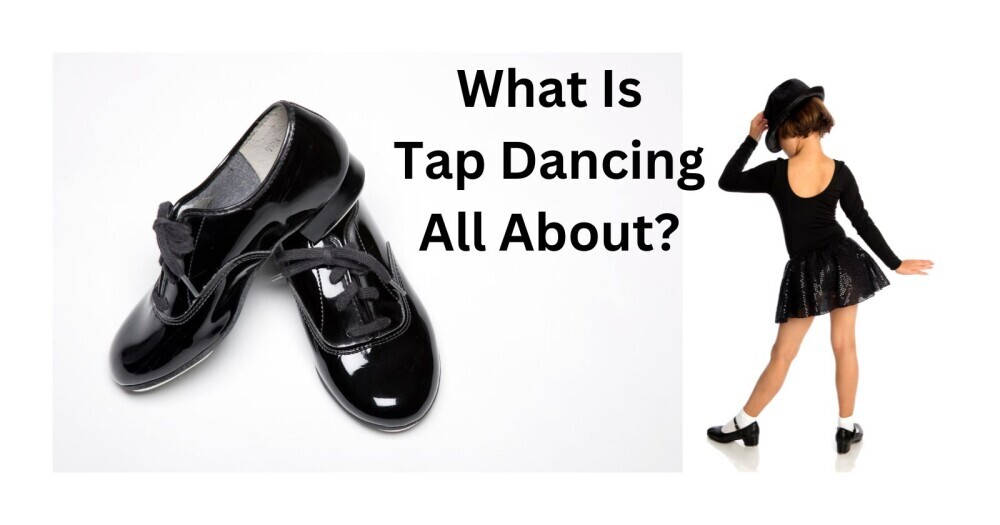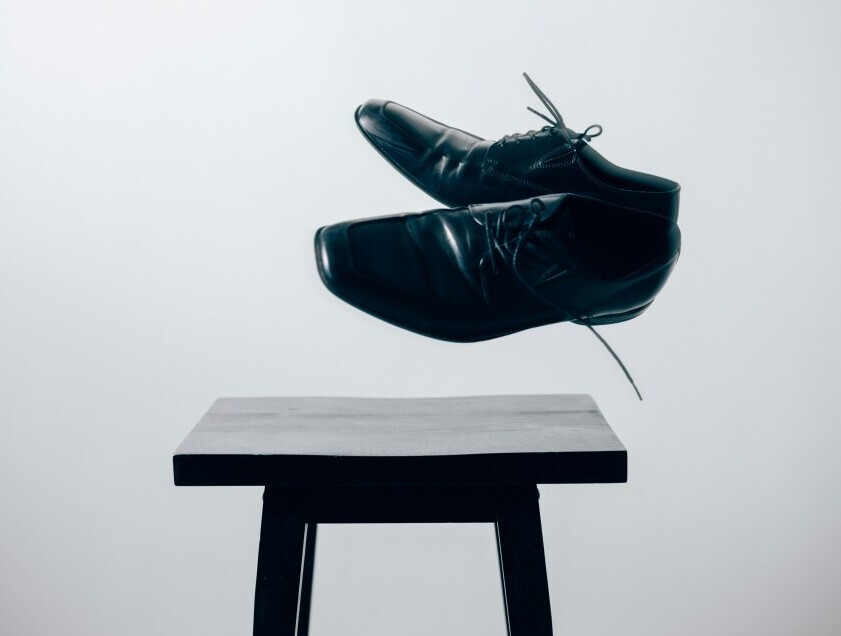Tap dancing is that one dance form where your feet pretty much become a musical instrument.
Tap dancing is created by mixing African rhythmic step dances and Irish jigs, it’s all about making rhythm with your feet, using metal plates on the shoe’s heel and toes to keep time or create a melody. The sound is unmistakable and can sound like anything from a drum roll to a whole percussion section. Take a look at an example of a tap shoe here.
My daughter is an avid tap dancer and she swears that Bloch Tap Dancing Shoes are the best.
Tap dance has had a fascinating journey across cultures, adding layers of complexity and style with each new influence.
From the enslaved African communities who brought their rhythmic skills to the United States to the influence of Irish immigrants and their traditional dance forms, tap dance began as a means of cultural expression and storytelling.
There’s a unique appeal to tap dance, too. It’s raw, expressive, and downright interactive.
When you watch a tap dancer bust out those precise and percussive steps, it’s like watching music come to life. More than just dance, it’s a conversation between the dancer, the floor, and the audience, one rhythm at a time.
What pulls people in is its rhythmic precision mixed with a free-spirited vibe that lets dancers improvise and connect deeply with the music.
Tap dance, with its step-ball-changes, and shuffles, is all about personality, expression, and innovation. It’s no wonder people find it both challenging and liberating at the same time, making it a fascinating art form!
You can read more about different dance forms by clicking here.
 The History of Tap Dancing: Roots and Evolution
The History of Tap Dancing: Roots and Evolution
Tap dance has a rich history that’s a blend of diverse cultural elements. It started its journey from the fusion of West African juba dance with Irish jigs and clogging, each bringing a unique sound and vibe to the art form. Enslaved Africans adapting their traditional dances to new environments heavily influenced tap dance’s rhythmic base.
The Vaudeville era was a major turning point. It gave tap dancers a stage — quite literally. As part of variety shows, tap dance moved from street corners to theaters. Dancers like John “Bubbles” Sublett, who introduced complex syncopations, changed the game, making tap more sophisticated and a staple of entertainment.
Then came the Harlem Renaissance, a cultural boom that put African American artists and performers in the spotlight. Tap dance evolved significantly during this time, with performers like Bill “Bojangles” Robinson showcasing elegant and exacting footwork that captivated audiences. This period truly expanded the artistic possibilities of tap.
Over the years, significant milestones such as the creation of tap as a unique American art form, inclusion in Hollywood films, and popular television further spread its appeal and innovation. Each decade brought new influencers and techniques, shaping tap into a dance that’s both timeless and adaptable, paralleling social and cultural changes.
Understanding these roots not only enriches appreciation but also inspires those looking to connect more deeply with tap. The dance is a testament to creativity and adaptability — a living, breathing homage to its roots even as it continues to innovate.
For anyone stepping into those tap shoes, knowing the history adds depth to each beat and shuffle.
Famous Tap Dancers: Icons of Rhythm and Innovation
Tap dance has been graced by some absolute legends who’ve not only mastered the art but also pushed its boundaries.
Bill ‘Bojangles’ Robinson, perhaps the most iconic figure in tap history, was a trailblazer who brought rhythm tap to the big stage with unmatched charisma and precision. He was a pioneer in shifting tap dance from a flat-footed style to dancing upright on the balls of the feet, creating a lighter, more delicate sound.
Enter Fred Astaire, who took tap and pure dancing elegance to the silver screen. Astaire’s seamless flair, combining tap with ballroom, set new standards for choreography in Hollywood musicals. His ability to weave storytelling into dance routines left an indelible mark in cinema and introduced audiences worldwide to the charm of tap.
Gregory Hines took the baton and ran with it, bringing a fresh modern twist. Known for his improvisational style and intricate footwork, Hines revitalized tap in the late 20th century, making it relatable to new generations. He advocated for its recognition as a serious art form and was pivotal in reviving public interest.
In more recent years, Savion Glover’s intense and energetic style, known as ‘hardcore tap’, has transformed the contemporary scene. His work in productions like “Bring in ‘da Noise, Bring in ‘da Funk” pushed tap into the realms of storytelling and expression beyond traditional boundaries.
We’re in a vibrant era where tap continues to evolve with artists like Michelle Dorrance, whose innovative approach blends technical mastery with complex musicality and spreads tap into other dance forms.
Paying attention to these past and present masters is a way to understand tap’s evolving styles, thereby allowing new dancers to create their signature moves while staying connected to the art form’s rich lineage.
The Art of Tap Dance Today: Expressions and Innovations
Today, tap dance is more dynamic than ever, blending tradition with modern influences. Dancers aren’t just sticking to the classic tunes; they’re tapping in jazz clubs, at hip-hop shows, and even alongside DJs in nightclubs. This cross-pollination is redefining what tap can be.

Current trends highlight the fusion of tap with other dance styles like modern, ballet, and even breakdancing. This blending creates a fresh narrative where traditional tap steps intertwine with newer movements, making the art form more accessible and exciting.
Technology is also playing a part. Digital tap shoes equipped with sensors are allowing dancers to create new sounds and effects, taking performances to futuristic levels. This innovation invites creativity, offering dancers a chance to customize their sonic footprints.
For those itching to learn tap, there are plenty of opportunities.
Tap classes are widely available, ranging from beginner to advanced levels. Online platforms now offer tutorials and sessions taught by renowned instructors you can access from home, making learning tap more inclusive than ever before.
Performance spaces are evolving too. From Broadway stages to local community theaters, tap dance is increasingly becoming a staple in diverse venues. This growth signals a healthy interest in tap as both a creative outlet and a professional pursuit.
Exploring and embracing these innovations in tap dancing can open up a world of possibilities. Whether you’re a dancer looking to experiment with different styles or someone eager to discover this rhythmic art, tap offers a unique platform where art meets personal expression.
This article may contain affiliate links, which means that the owner of this website will get a commission on qualifying purchases, at no extra cost to the buyer.


This article provides a fascinating exploration of tap dancing, from its rich historical roots to its modern-day innovations. I particularly enjoyed the emphasis on how tap has evolved over time, blending African and Irish dance forms to become the dynamic and expressive art form it is today. The discussion of tap legends like Bill “Bojangles” Robinson and Gregory Hines highlights how these icons pushed boundaries and brought new life to the genre. I’m curious, with the advancements in technology and fusion with other dance styles, where do you see the future of tap dance heading? How do you think it will continue to evolve?
Tap has certainly evolved in some ways, but it has kept its authenticity in many other ways. Many teachers still use the old hits to choreograph.
Tap shoes have certainly come a long way over the years, and this is the most that tap has evolved, to me, as the shoes allow the dancers to perform more complicated steps.
I have to admit, dance usually isn’t my thing—I’ve never been all that interested in it. But this article on tap dancing really drew me in! Despite my disinterest in dance, there is something about the rhythm, the sounds, and the sheer energy of tap that’s just captivating. I didn’t realize how much history and technique go into it; it’s almost like percussion mixed with movement. Reading this actually makes me want to learn more, even if I wouldn’t typically dive into the dance world. Tap really does stand out as something special!